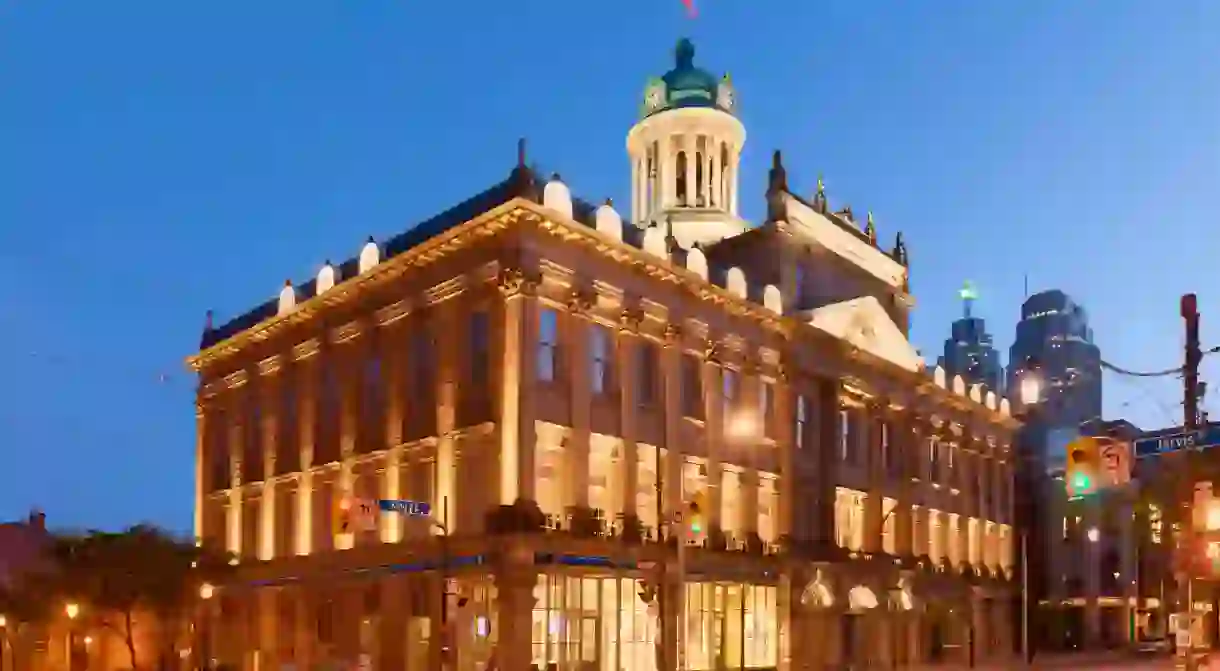A History of Toronto’s St Lawrence Hall in One Minute

St Lawrence Hall, named after Canada’s patron saint, is Toronto’s historic meeting hall. You’ll find it in the heart of the city, nestled at King Street East and Jarvis Street, near the famous St Lawrence Market. Built upon a burnt-down structure in the Market Block area, this building was the first public meeting hall in Toronto to feature a 1,000-seat amphitheatre.
Opening in 1850, St Lawrence Hall played host to all kinds of public gatherings, balls, receptions, lectures, concerts and exhibitions as the center of Toronto’s cultural, social and political life, even welcoming famous names such as John A Macdonald and George Brown during its time.
In 1803, Lieutenant Governor Peter Hunter came up with a plan for the Market Block, assigning the area that’s known as St Lawrence Market today as the designated market area. That same year, the first permanent farmers’ market structure was built in the northern corner along King Street (this wooden structure was replaced by a brick structure in 1831). In 1834, the local civil offices moved into an older structure on the spot St Lawrence Hall occupies today, where they remained until the construction of the City Hall nearby. In 1849, the Great Fire of Toronto destroyed the northern part of this structure and much of the town center. And in an effort to rebuild, a plan was made that would include building St Lawrence Hall in its place.
It was designed by William Thomas in Renaissance Revival style, including a central Roman-style temple, Corinthian columns and three arches. While Thomas’s main influence was 16th-century Italian Renaissance architecture, he also incorporated contemporary additions such as the French mansard roof to protect the building during winter, and Victorian accents. The building officially opened in 1850, and in 1851 the facade was altered by Thomas, but the details of the redesign are unknown.
For years to come, the hall would be the social center of the city, hosting meetings and events such as recitals by world-renowned musical acts, performers and artists, featuring names like Sigismund Thalberg and Ole Bull, as well as performances by the Toronto Philharmonic Society. The hall also hosted the National Ballet of Canada and is said to have been an important meeting place for members of the Abolitionist movement and the Irish Catholic Benevolent Union. The lower level was integrated into the Market Square by adding commercial stores, the second level held offices and the third level had a 1,000-seat assembly room used for concerts and big speeches. However, by 1870, larger and more conveniently located performance venues began popping up around the city, and the building entered what would be a long list of years of decline leading to the eventual deterioration of the building.
In 1967, the hall was declared a national historic site and restored in commemoration of Canada’s first 100 years, opening up the hall’s assembly room for social and corporate events, including the first two Juno Awards ceremonies in 1970 and 1971. Today, the hall continues to be used as an event space used for weddings, art exhibitions and conferences.













